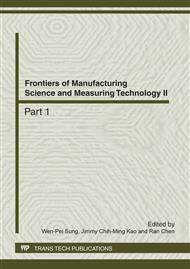p.424
p.428
p.432
p.437
p.441
p.446
p.450
p.455
p.459
Mechanical Properties of SUS301L Stainless Steel Welded Joints for Railway Vehicles
Abstract:
The tensile and the fatigue tests of three different rolling states of SUS301L stainless steel welded joints were investigated, and their S-N curves were obtained and analyzed. The typical fracture morphology of fatigue specimens were observed by scanning electron microscopy (SEM). The results indicate that the tensile strength and the yield strength of three kinds of SUS301L stainless steel welded joints increase with increasing of rolling degrees, while only the elongation rate decreases with the increasing of rolling degrees; the median fatigue limit of SUS301L-DLT、SUS301L-ST、SUS301L-MT for fatigue life 2×106 cycles are 247.5MPa, 331MPa, 266.7MPa.
Info:
Periodical:
Pages:
441-445
Citation:
Online since:
April 2012
Authors:
Price:
Сopyright:
© 2012 Trans Tech Publications Ltd. All Rights Reserved
Share:
Citation:


